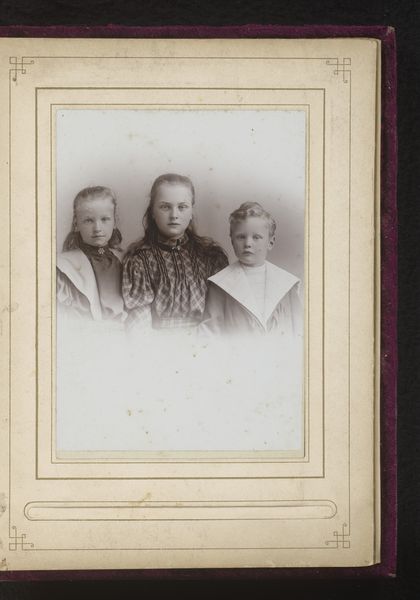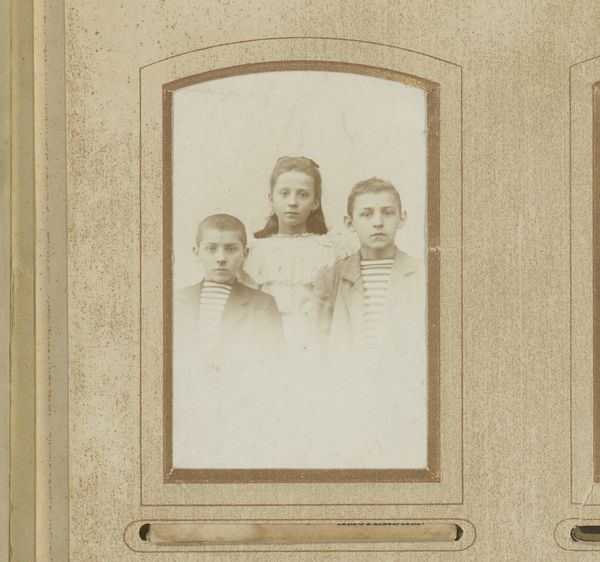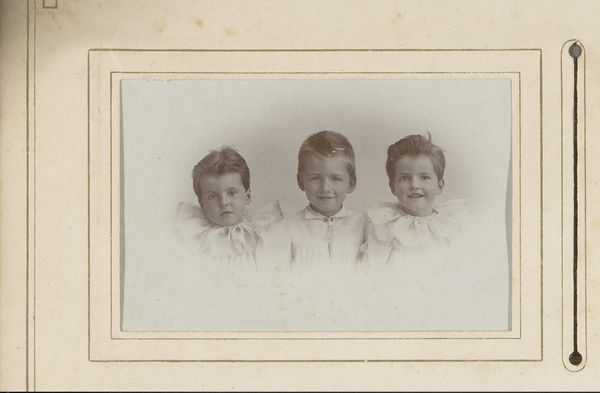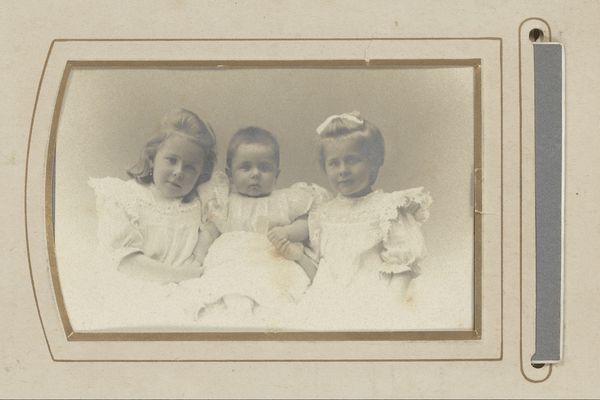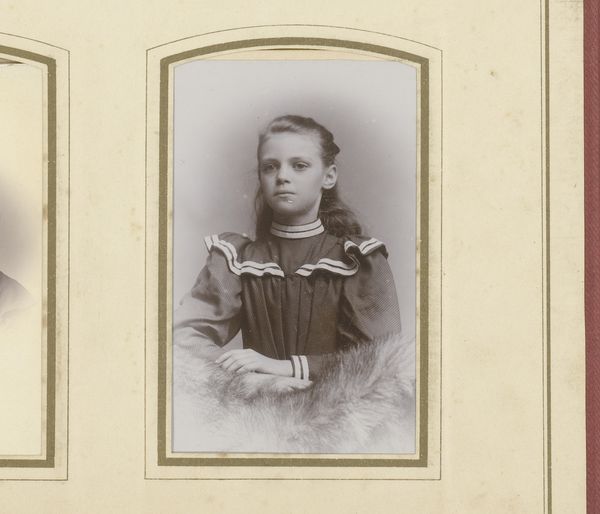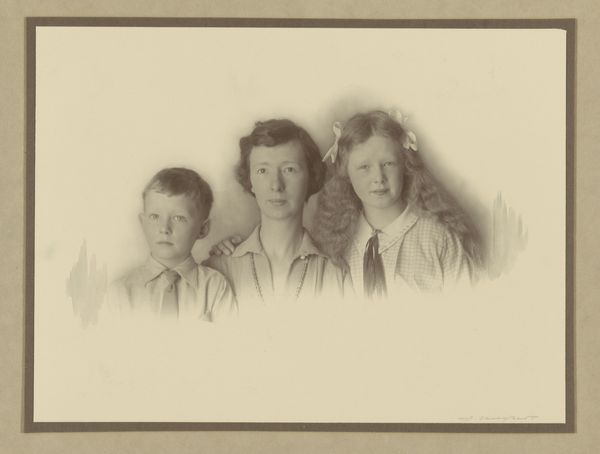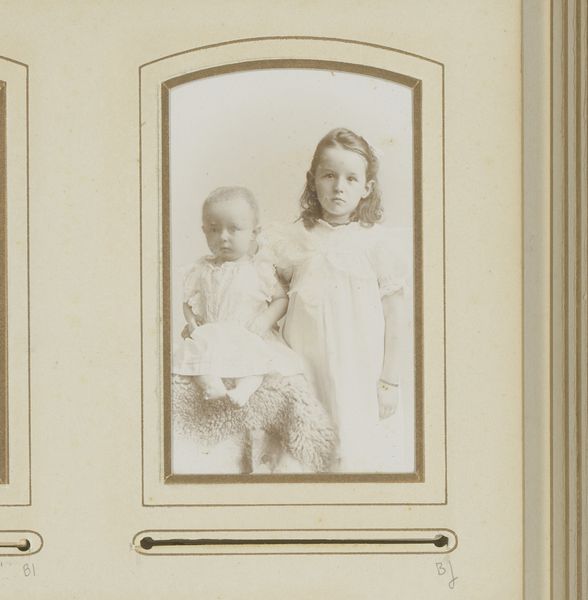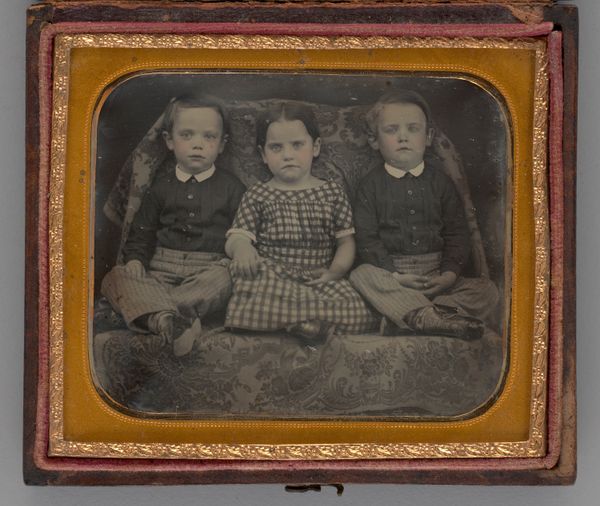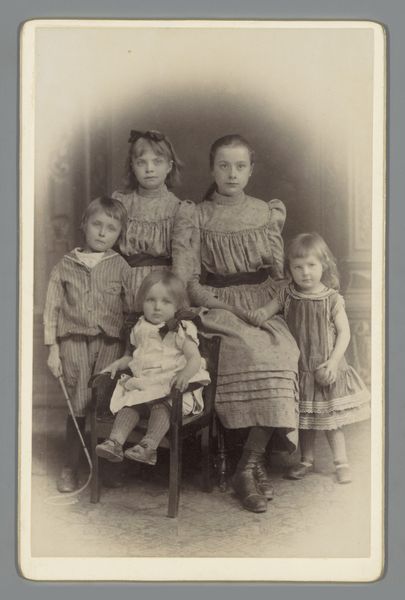
print, photography, gelatin-silver-print
#
portrait
# print
#
photography
#
historical fashion
#
group-portraits
#
gelatin-silver-print
Dimensions: height 110 mm, width 165 mm
Copyright: Rijks Museum: Open Domain
Editor: So, this is a photograph, "Groepsportret van vier kinderen", a group portrait of four children, created sometime between 1880 and 1900 by P. Aubert. It looks like a gelatin-silver print. I'm really struck by the textures here – the paper, the lace, the kids' hair. How do you read this image? Curator: I find it fascinating to consider the materiality of this photograph. Gelatin-silver prints like this became popular because of their reproducibility, moving image-making from the realm of a specialized, skilled artisan to something more widely accessible. This also makes it a commodity that could be bought and sold, not unlike other mass produced things from the time. Editor: Interesting. So the mass production aspect is key? Curator: Absolutely. Consider the labour involved. Someone had to prepare the chemicals, coat the paper, take the picture, develop the print. This labour, in turn, fueled an industry creating jobs while embedding new consumer habits and capitalist relations into everyday life. The photographic studio as a space of work is therefore part of how meaning and use value come to be tied to an artwork such as this one. Editor: I hadn't thought about the labor behind it like that. It's not just an image, but a product of industry, a process with social implications. The photograph normalizes ideals of beauty as an industry. It wasn't as simple as clicking a button! I'm wondering if photography further complicates who had access to representation? Curator: Indeed. Who could afford to have their photograph taken? What kind of attire were they expected to wear? And, as you pointed out, it certainly played a role in solidifying existing social hierarchies even further through material culture. What do you make of the expressions on their faces? Editor: Well, they certainly look stiff, not entirely happy. And in this context it's clearer that the labor required by all parties in taking the photograph produced these specific types of expressions. This image speaks more broadly about work, family, and historical trends than it does about any of these specific individuals. Thank you, I appreciate how you contextualized the social and material aspects involved! Curator: My pleasure! Considering how these objects came into being makes you realize they were made, and therefore the product of people, power, and specific structures.
Comments
No comments
Be the first to comment and join the conversation on the ultimate creative platform.
